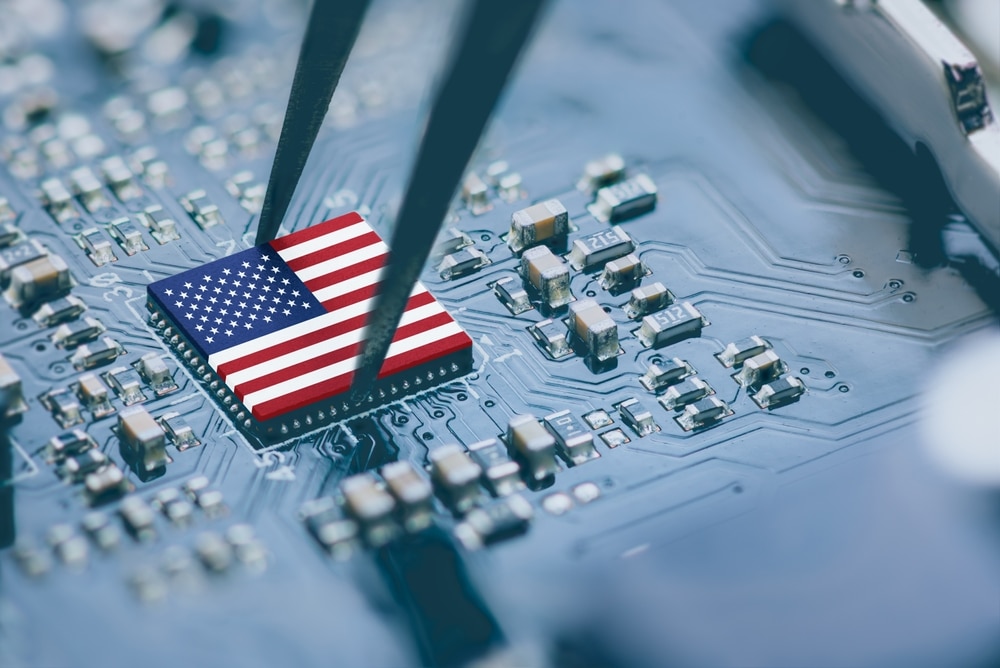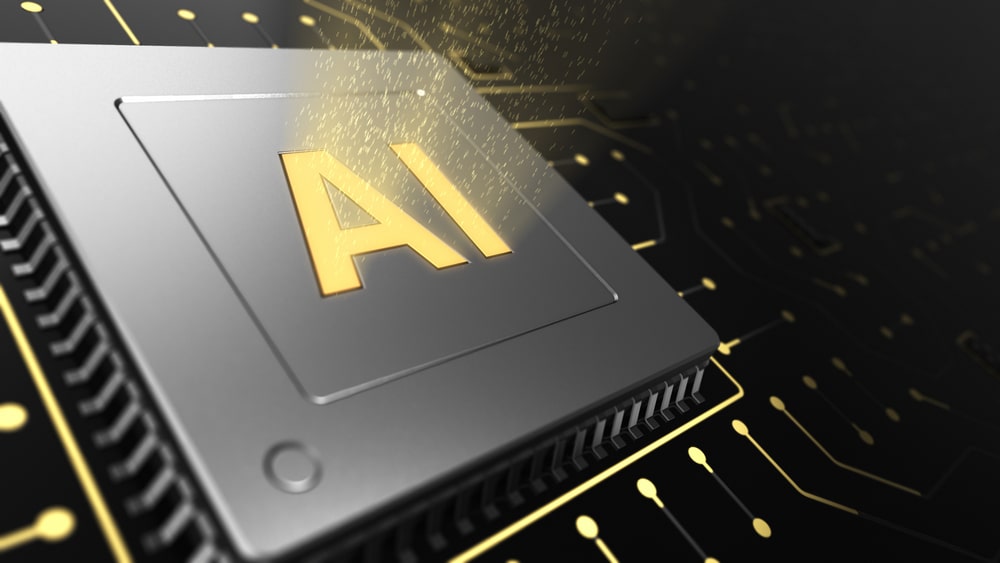In this first-round matchup, two of the world's largest semiconductor companies go head-to-head to determine which is currently the better investment.
March 16, 2023
Welcome to our 7investing Market Madness competition! Throughout this campaign, we’re matching popular stocks up against one another to determine which will be the best investment over the next three years. And then, by voting in the poll at the bottom of the article, you can help us determine which stock will go on to the next round!
Our rankings are determined by the total return of the stock during calendar 2022. The highest-ranked stock had the best overall return of those in our tournament, and our lowest-ranked stock had the lowest overall return.
In this final first-round matchup, we have a battle of the semiconductor chipmakers: with Intel up against AMD! The two were very similar performers in 2022, with Intel’s stock falling (48%) and AMD falling (52%).
But past performance is not predictive of future returns. Which of these stocks do you believe will provide investors with the best forward three-year return? Read our investing thesis and cast your vote in the poll below!
Our Market Madness tournament is in support of our new 7investing Starter membership, which we are giving away free during the entire month of March. To get started with Starter — and to see how we’re already outperforming the S&P 500 by a convincing margin — click here to automatically apply your “madness” promo code.
Advisor Coverage: Simon Erickson

Intel (Nasdaq: INTC) is one of the semiconductor world’s most iconic businesses, who’s spent the past half century designing and manufacturing smaller and more powerful microprocessors for personal computers. Over the years, it’s expanded into laptops and corporate datacenters, while also researching sexy new applications like neuromorphic and quantum computing. With 120,00 employees and hundreds of thousands of active patents, Intel is a truly global, innovative organization.
Yet Intel has fallen behind several of its competitors in chip design in recent years. ARM Holdings sports 90% market share when it comes to the design for Smartphone chips, and NVIDIA and AMD have been stealing share in the datacenter with their high-performance accelerators to compute AI code more efficiently. This is perhaps the market’s most lucrative segment, as new AI applications like OpenAI’s ChatGPT are extremely demanding for cutting-edge chips. NVIDIA’s data center revenue is growing at 61% right now ($3.8 billion in its most recent quarter) and AMD’s is growing at 45% ($1.6 billion in its own). Meanwhile, Intel’s data center sales fell by 27% (to $4.2 billion). There is a sign it is clearly ceding share to competitors on the design front.
On a more optimistic note, Intel is using rising geopolitical tensions as an opportunity to provide domestic manufacturing supply for America’s technology companies. Its new Intel Foundry Services takes the design plans from customers and manufactures at spec for the lowest cost possible. IFS is reaching an annual run rate of nearly $700 million and has recently won contracts from MediaTek and Qualcomm. Fabs are quite expensive to build, so Intel wants to offer some of its manufacturing capacity to produce chips for others.
China’s ambitions of annexing Taiwan has given Western chip designers an uneasy feeling about supply disruptions, giving Intel a unique opportunity to offer supply security to offset the rising risks. The Biden administration’s recent CHIPS Act contributed an initial $3 billion in subsidies to Intel’s Ohio-based “mega fab“, which will cost $20 billion in its first phase and potentially up to $100 billion in total. Intel could see a huge opportunity if other corporate clients like Apple (Nasdaq: AAPL) or Qualcomm (Nasdaq: QCOM) pursue domestic suppliers as well.
Intel has also recently undertaken several cost-cutting initiatives, which includes a $10 billion workforce reduction plan and a 65% cut to its dividend.
And finally, Intel’s stock is incredibly inexpensive. Recently selling for only 1.5x fiscal 2022 sales and 5x earnings, it is priced as though nothing could go right.
If well-respected CEO Pat Gelsinger can turn the ship around, there could be glory in Intel’s future once more.
Advisor Coverage: Luke Hallard

Nvidia (Nasdaq: NVDA) is a semiconductor company that designs the world’s leading Graphics Processing Units (GPUs) – specialized computer processors that are extremely efficient at running tasks that can be executed in parallel.
Although the company has historically made the majority of its revenues from its Gaming segment, in recent quarters, revenue from Nvidia-powered Data Centers has become the largest driver of growth, and today Nvidia’s GPU-powered architectures accelerate almost all fields of computation including artificial intelligence, data science, autonomous vehicles, robotics, augmented and virtual reality, scientific computing, climate modelling, medical imaging, computational finance, and many others.
Nvidia has recently struck several key partnerships that position the company’s Data Center segment even more strongly for the future. Data Center revenues were $3.6 billion in the latest quarter (+11% YoY), but this barely scratches the surface of how large this segment could grow, as AI becomes an essential capability for any business that expects to compete successfully.
The primary risk of an investment in Nvidia is the long development cycle for hardware. Manufacturing lead times in some cases extend to twelve months or longer, which requires the company to accurately estimate customer demand. If there is a significant mismatch between supply and demand, as occurred in the second half of 2022, the company could face either product shortages or excess inventory.
Nvidia is also heavily dependent on the Taiwan Semiconductor Manufacturing Company (NYSE: TSM) for the majority of GPU manufacturing, exposing it to geopolitical risk. The company has reportedly signed a partnership with Samsung (OTC: SSNLF) to diversify its manufacturing base.
Nvidia’s Data Center segment will be the key driver of long-term capital appreciation for the company, with the Automotive segment adding some interesting optionality to the investment thesis if driverless vehicles become a reality over the coming decade.
Will Intel or Nvidia be the better investment for the upcoming three year period? Cast your vote in our live poll below!
Welcome to our @7investing Market Madness tournament!
We're now in Round 1, Matchup 8: #8 ranked Intel $INTC vs #9 ranked $NVDA.https://t.co/3KHNEWZL2L
Which of these two stocks do you think will provide the greater investing return over the next 3 years?#investing #stocks
— 7investing (@7investing) March 16, 2023
Yesterday’s matchup paired Disney (NYSE: DIS) up against Advanced Micro Devices (NASDAQ: AMD).
Our analysis showed the House of Mouse to be an entertainment empire with a deep content library, though a struggle in leadership transition and the profitability of its Direct to Consumer streaming business were long-term challenges. AMD has developed one of the semiconductor industry’s broader product lines and is winning share in the datacenter, though rising geopolitical risks and a industry-wide slowdown have weighed on its stock price.
Ultimately, AMD won a convincing 76% of the vote and will be progressing on to the next round.

Already a 7investing member? Log in here.